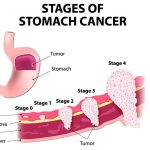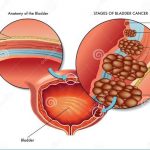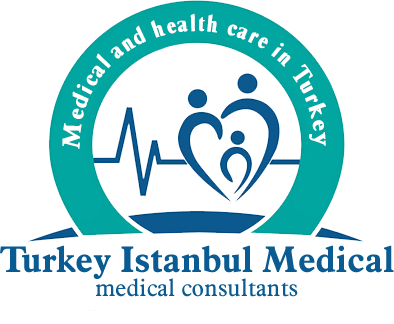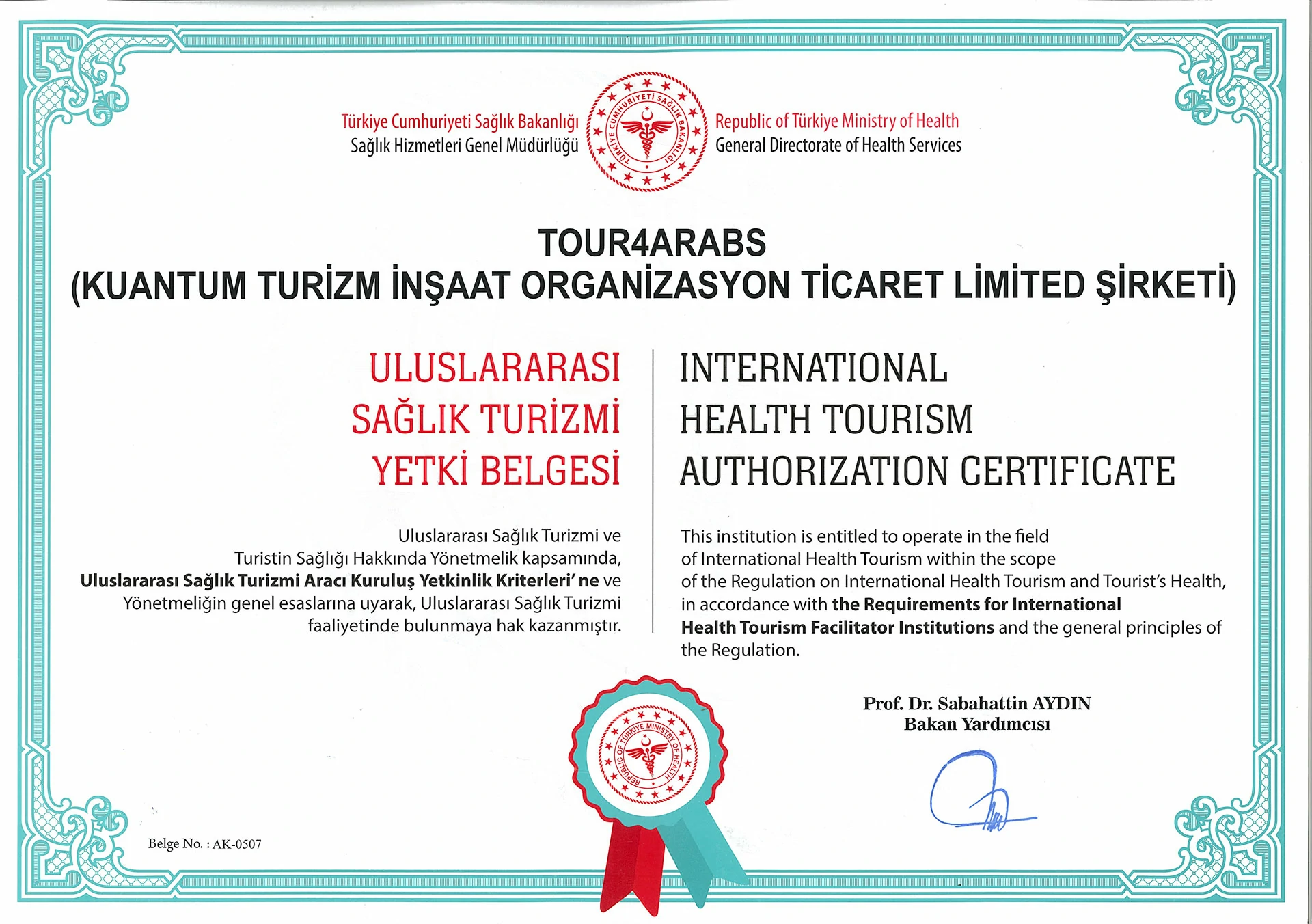What is Lung Cancer?
Lung cancer occurs as a result of the uncontrolled proliferation of tissues and cells in the lungs, which enable the body to receive oxygen and remove carbon dioxide formed during vital activities from the body. The masses formed as a result of this uncontrolled proliferation grow in their area and can damage the surrounding tissues.
Lung cancer is divided into two:
- Small Cell (Oat Cell) Lung Cancer
- Non-Small Cell Lung Cancer.
They are small cell lung cancers usually seen in smokers. It spreads throughout the body (metastasize) faster than other types of lung cancer.
There are many types of non-small cell lung cancer:
Non-Small Cell Lung Cancer:
There are many types of non-small cell lung cancer. The type of cancer cells of each type is different.
Every cancer cell grows differently. And it spreads in different ways.
Types of non-small cell lung cancer are examined under a microscope. And it is determined by the type of cells in the cancer tissue and the appearance of the cells.
Small cell lung cancers comprise roughly 15% of all lung cancers.
It is usually seen in patients who smoke.
Compared to other types of lung cancer, it spreads throughout the body through the lymphatic system and blood faster.
Squamous Cell Carnisomal:
It arises from squamous cells that appear thin and flattened like a herringbone. Also called epidermoid carcinoma.
Adenocarcinoma:
It originates from cells with glandular (secretory) properties.
Large Cell Carcinoma:
It is a cancer in which large and abnormal cells are seen when viewed under a microscope.
Adenosquamous Carcinoma:
It is a cancer that starts from cells that appear flattened under the microscope and also shows glandular characteristics.
Pleomorphic, Sarcomatoid, or Sarcomatous Carcinoma:
It is a group of cancers that show different types of cancer cells under the microscope.
Carcinoid Tumor:
It is a slow-growing, neuroendocrine cancer (starting from cells that secrete hormones as a result of nervous stimulation).
What are The Causes of Lung Cancer?
As it is generally known;
The most important factor causing lung cancer to occur is smoking.
However, many people with lung cancer have been diagnosed with lung cancer even though they have never smoked.
However, it should not be ignored that approximately 80% of people with the disease use cigarettes or similar tobacco products. The risk of lung cancer in people who smoke 1 pack or more cigarettes a day is approximately 20 times higher than in people who have never smoked.
Even though some people do not smoke, they may constantly be in environments where smoking is smoked.
If the person’s parents or spouse with whom he or she lives in the same house smokes, or if the person regularly spends time in environments covered with cigarette smoke, this leads to secondhand smoking.
Although it is not as harmful as active smoking, it is known that the risk of lung cancer for people who spend time with parents or spouses who smoke increases by approximately 20 to 30%.
What are Lung Risk Factors?
Lung cancer risk factors may include smoking, second-hand smoke, family history, exposure to environmental toxins (for example, asbestos or radiation), air pollution, and genetic factors.
To smoke:
Your risk of lung cancer increases with the number of cigarettes smoked each day and the number of years used.
Exposure to Secondhand Smoke:
Even if you don’t smoke, being in a smoking environment (passive smoking) increases your risk of lung cancer.
Occupational Exposure and Pollution:
Breathing in certain chemicals and substances used in some professions and industries may increase the risk of lung cancer.
These chemicals and substances include:
- Arsenic
- Coal and coke fumes
- Cadmium
- Asbestos
- Beryllium
- Silica
- Nickel
Previous Radiation Therapy:
Radiation therapy to the chest for another type of cancer being treated may increase the risk of developing lung cancer.
Exposure to Radon Gas:
Radon, this natural radioactive gas obtained from very small amounts of uranium through its natural breakdown in soil, rock and water, can increase the risk of lung cancer when inhaled.
Family History of Lung Cancer:
People who have first-degree relatives (parents, children) or siblings with lung cancer have a higher risk of contracting the disease.
Previous Lung Diseases:
Another reason that increases the risk of lung cancer is previous lung diseases. This risk increases with smoking.
What are The Symptoms of Lung Cancer?
Increasing Cough:
The first symptom of lung cancer is a cough that gradually increases. However, the cause of cough is generally ignored because it is attributed to other reasons. A persistent cough that lasts longer than two weeks, gradually increases, and whose cause is unknown is the most distinctive feature of this cancer. Along with cough, phlegm and bloody sputum are the most prominent features.
Spitting Blood:
Coughing or coughing up blood can be a serious symptom. Lung cancer can cause bleeding in the airways. If you notice that you are coughing up blood, you should contact a healthcare professional immediately.
Lung cancer symptoms may appear differently in each individual and may vary in severity. If you experience these symptoms or have concerns, it is important to consult a doctor immediately and have the necessary examinations. Early diagnosis can increase your chances of fighting the disease by allowing you to start treatment.
Experiencing Pain in the Breasts:
There are many causes of chest pain. But it is among the main symptoms of lung cancer. If the pain increases when breathing deeply, laughing or coughing, you should see a specialist.
Experiencing Shortness of Breath:
Problems such as shortness of breath occur in all stages of lung cancer. Lung cancer develops insidiously. And the shortness of breath experienced is ignored because it is attributed to other reasons. However, early diagnosis is important in cancer.
Weight Loss and Loss of Appetite:
Individuals who constantly smoke should definitely see a specialist when they experience loss of appetite. Unexplained weight loss is among the symptoms of lung cancer.
Difficulty in Swallowing and Hoarseness:
Difficulty swallowing and hoarseness are also among the symptoms of lung cancer. If the cause of hoarseness is not a cold or something else, a doctor should be consulted.
Weakness:
Fatigue and constant fatigue are common symptoms in lung cancer patients.
Clubbing in Fingers:
Clubbing: It is a slow and painless development that occurs when the soft tissue at the tips of the fingers and toes swells and becomes rounded. Rapid and painful occurrence is among the symptoms of lung cancer.
Body Pain:
Pain in the back, pain in the shoulder, pain in the arms and legs, and headache are among the symptoms of lung cancer.
Drooping Eyelid:
Drooping eyelids and shrinking pupils are among the symptoms of lung cancer.
Recurrent Infection:
Respiratory tract infections that constantly recur and show no signs of recovery are among the symptoms of cancer.
What are The Stages of Lung Cancer?
Staging in Non-Small Cell Lung Cancer:
In order to determine the treatment method for lung cancer, the stage of the cancer must be determined. The stage is determined according to the tumor and its spread.
Stage 1:
The tumor is only in a small part of the lung and has not spread to any lymph nodes.
Stage 2:
The disease has spread to the nearest lymph nodes or has spread to the membrane around the rib cage, diaphragm, lung or heart without spreading to the lymph nodes.
Stage 3:
The tumor has spread to the space between the two lungs called mediastinum or to the lymph nodes there, or has spread to the lymph nodes with involvement of the lung membrane, rib cage or diaphragm.
Stage 4:
The tumor has spread to distant organs or the other lung, or has caused fluid accumulation between the lung membranes or heart membranes.
Staging in Small Cell Lung Cancer:
In order to determine the definitive treatment for small cell lung cancer, the stage of the disease is determined.
This staging; It is evaluated under two headings: disease limited to the lung and widespread disease that has spread beyond the lung. Treatment methods for limited and widespread small cell lung cancers are different.
The stage of the disease is determined as a result of certain tests and the treatment method is decided. If the cancer is seen on one side of the lung, it is limited stage.
If it appears in both lungs or if it has spread to other organs, it is diagnosed as advanced disseminated stage.
It is possible for the disease to recur. Treatment involving chemotherapy is also applied by targeting tumors in the lungs or tumors in other parts of the body.
How is Lung Cancer Diagnosed?
A series of steps and tests are required to diagnose lung cancer.
Stages of the Lung Cancer Diagnosis Process:
History and Risk Factors Evaluation:
First, the person’s medical history, smoking habits (cigarettes, pipes, cigars, etc.), environmental or occupational exposures, and family history are taken into consideration. This information is important to evaluate the patient’s risk factors.
Physical Examination:
The patient is physically evaluated and symptoms are examined.
What are The Imaging Methods for Lung Cancer?
X-Ray Imaging:
In the first stage, a two-way lung x-ray is taken. This x-ray helps identify changes in the lungs. However, chest radiography does not always give definitive results, so a more detailed examination may be required.
Computed Tomography (CT):
A CT scan shows the size, shape and location of the tumor. It can also detect enlarged lymph nodes due to spread lung cancer.
Magnetic Resonance Imaging (MRI):
MRI provides imaging by dividing the lung into sections and does not involve radiation.
Positron Emission Tomography (PET):
A PET scan is performed using a radioactive substance that accumulates in cancerous tissues. This method is used to determine the spread of cancer.
Bone Scintigraphy:
It is applied to check the presence of metastasis (spread) in the bones using radioactive material.
What are The Biopsy Methods in Lung Cancer?
Lung cancer may progress locally in the lungs or may have spread (metastasized) to other parts of the body, including lymph nodes, bone, and brain. For this reason, a tissue sample is taken from the lung to determine lung cancer and its type. The tissue sample taken by biopsy is examined under a microscope. Taking a biopsy of the tissue seen in the lung and believed to be cancer does not cause the tumor to spread and the disease to worsen.
The methods used to obtain this piece of tissue are:
Bronchoscopy in Lung Cancer:
The airways are examined and small tissue samples are taken through a thin lighted tube inserted through the mouth into the bronchi and trachea.
Needle Aspiration Application in Lung Cancer:
A sample of cancerous tissue is taken by entering the lung mass with a needle through the chest wall. This sample is examined under a microscope.
Thoracentesis Application in Lung Cancer:
To detect cancer cells, a sample is taken with a needle from the fluid surrounding the lungs.
Thoracotomy Application in Lung Cancer:
This method used to diagnose lung cancer is to open the chest cage with a surgical intervention. It is applied if all other methods are not suitable or if success cannot be achieved with all methods.
Application of Sputum Cytology in Lung Cancer:
It is a method of examining the material removed from the mucosa in the lungs by deep coughing under a microscope. A sputum sample taken from the patient is examined under a microscope to detect cancer cells.
When the patient is diagnosed with lung cancer as a result of the examinations, the samples taken from the patient are subjected to a series of tests to determine the stage and spread of the cancer and to determine the best treatment method. Depending on the stage of the cancer and the results of these tests, the treatment of lung cancer is personalized.
What are The Treatment Methods for Lung Cancer?
It varies depending on the type of disease, its stage, and the general condition of the patient.
Operation:
Depending on the type of lung cancer, it is the complete removal of cancerous tissue from the body through surgery. When lung cancer is diagnosed, it is first evaluated whether the patient is suitable for surgery. Different surgeries are performed in lung cancer depending on the spread of the cancer.
After surgery, some patients may need chemotherapy or radiation therapy (radiotherapy) to kill any remaining cancer cells.
Radiation Therapy (Radiotherapy):
It is a cancer treatment that uses high-energy rays to kill cancer cells or prevent their growth. The way radiotherapy is given depends on the type and stage of cancer being treated.
Chemotherapy:
It is a treatment that uses drugs that kill cells or stop them from dividing to stop the growth of cancer cells.
Chemotherapy can be taken by mouth. Or it may be injected into a vein or muscle. The drugs enter the bloodstream and can thus reach cancer cells in the body. The way chemotherapy is given depends on the type and stage of cancer being treated.
Targeted Therapy:
Targeted therapy is a form of treatment that uses drugs or other substances to attack cancer cells.
Generally, targeted therapies cause less damage to normal cells than chemotherapy or radiotherapy.
Immunotherapy (Smart Drugs and Smart Molecule Therapy):
Immunotherapy is a treatment method that uses the patient’s immune system to fight cancer.
Lung Cancer Vaccine:
It is a treatment option for stage four lung cancer patients. This vaccine can be used from the diagnosis of patients.
Lung cancer vaccine is preferred when other chemotherapy drugs have failed. Its side effects are less than other treatments and may affect life expectancy.
What are The Ways to Protect from Lung Cancer?
Lung cancer formation cannot be attributed to a single cause. As a result of research, many causes of lung cancer have been found. Various factors may play a role in the development of lung cancer.
Most of these are related to tobacco use. Lung cancer is not contagious. Some people may be more at risk of lung cancer than others. The risk of cancer increases in the following situations.
Smoking and Lung Cancer:
Smoking can cause lung cancer.
Harmful substances (carcinogens) contained in cigarettes damage lung cells.
These damages can lead to cancer over time.
A person’s risk of lung cancer depends on factors such as what age they started smoking, how long they smoked, how many cigarettes they smoked per day, and how deeply they smoked.
But quitting smoking can significantly reduce the risk of lung cancer.
Cigars, Pipes and Lung Cancer:
People who use cigars and pipes have a higher risk of lung cancer than those who do not use them. How many years a person has smoked a cigar or pipe, how many cigarettes a day he smokes, and how deeply he inhales are factors that affect the risk of cancer. Even if they don’t inhale, cigar and pipe smokers are also at risk for other types of lung and oral cancer. The risk of lung cancer for secondhand smokers (those exposed to tobacco smoke) also increases in case of secondhand smoke.
Asbestos and Lung Cancer:
Asbestos is a type of natural mineral used as an insulation material in some industries.
These asbestos fibers can travel through the air. It can settle in the lungs when inhaled.
These fibers damage lung cells. And thus it can increase the risk of cancer.
Studies show that workers exposed to asbestos have a 3-4 times higher risk of developing lung cancer than those who are not exposed.
This risk is higher in those working in industries such as shipbuilding, asbestos mining, insulation work and brake repair.
If asbestos workers smoke, the risk of lung cancer increases even more. Asbestos workers must use protective equipment provided by their employers and follow work and safety warnings.
Air Pollution and Lung Cancer:
A relationship has been found between lung cancer and exposure to air pollution. But this relationship has not been clearly described and requires further research.
Lung Diseases:
Some lung diseases, such as tuberculosis, increase a person’s risk of cancer. Lung cancer tends to develop more in areas affected by tuberculosis.
Patient’s Story:
A person who has had lung cancer once has a higher risk of getting a second lung cancer again than a person who has never had cancer. Quitting smoking after a lung cancer diagnosis can prevent a second lung cancer from developing.






